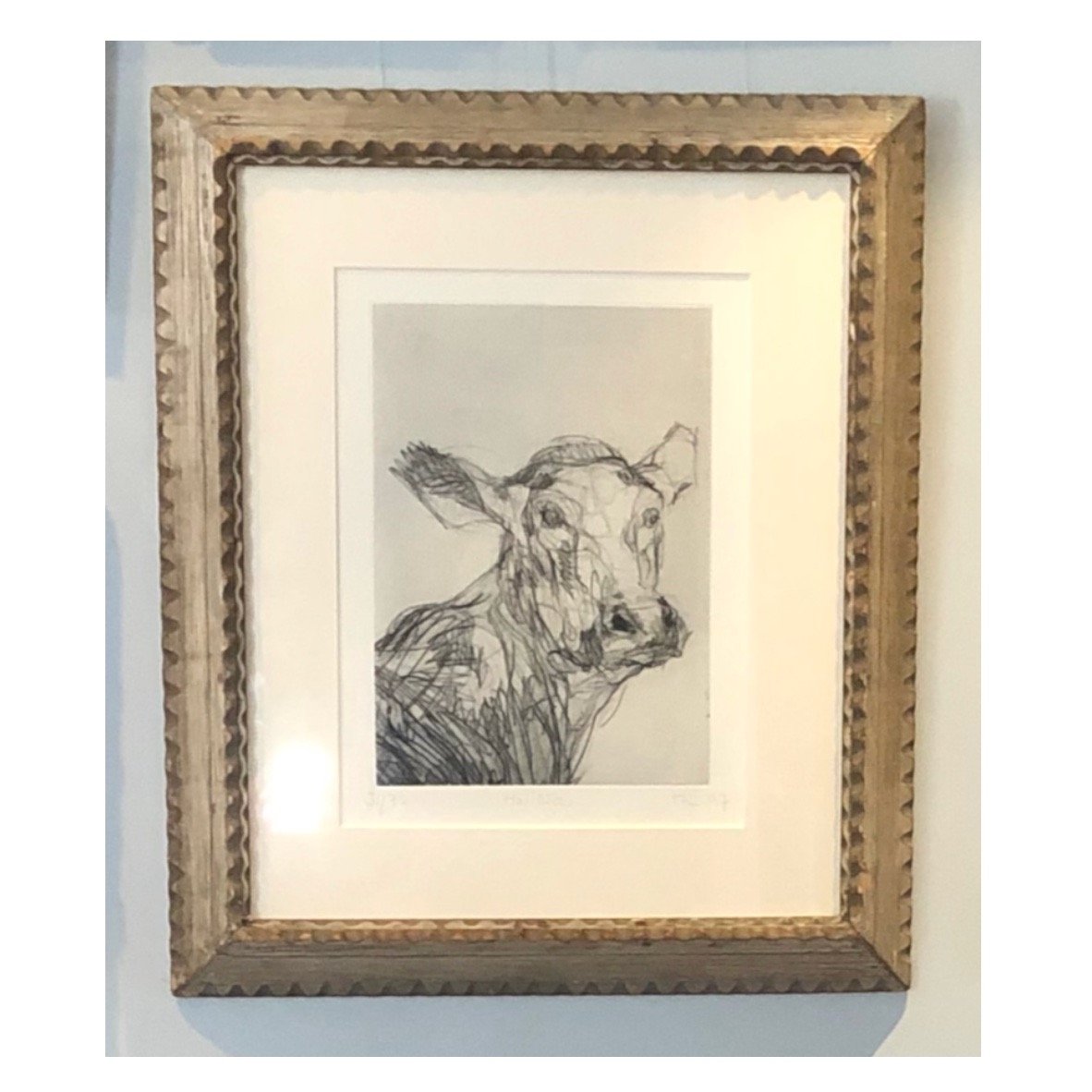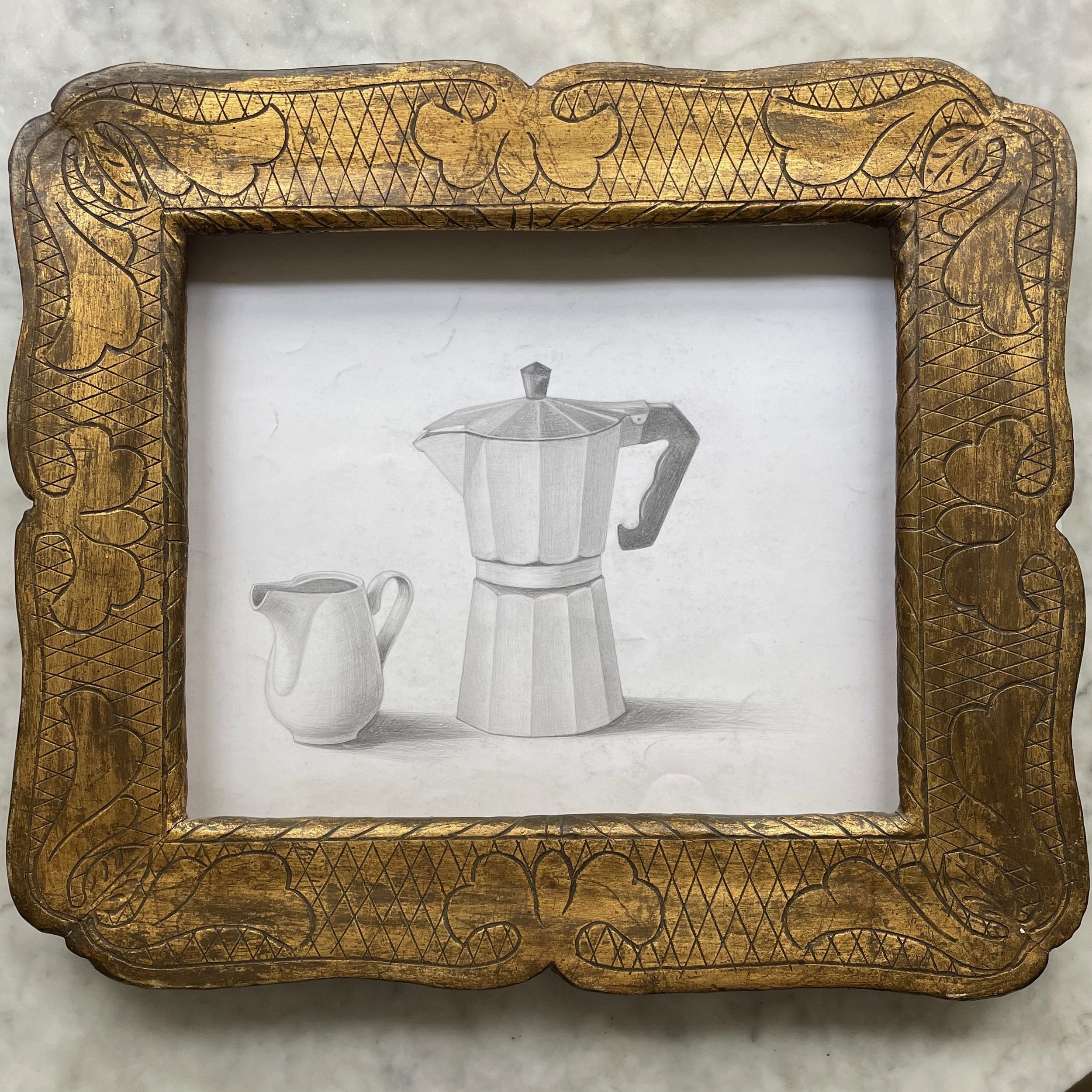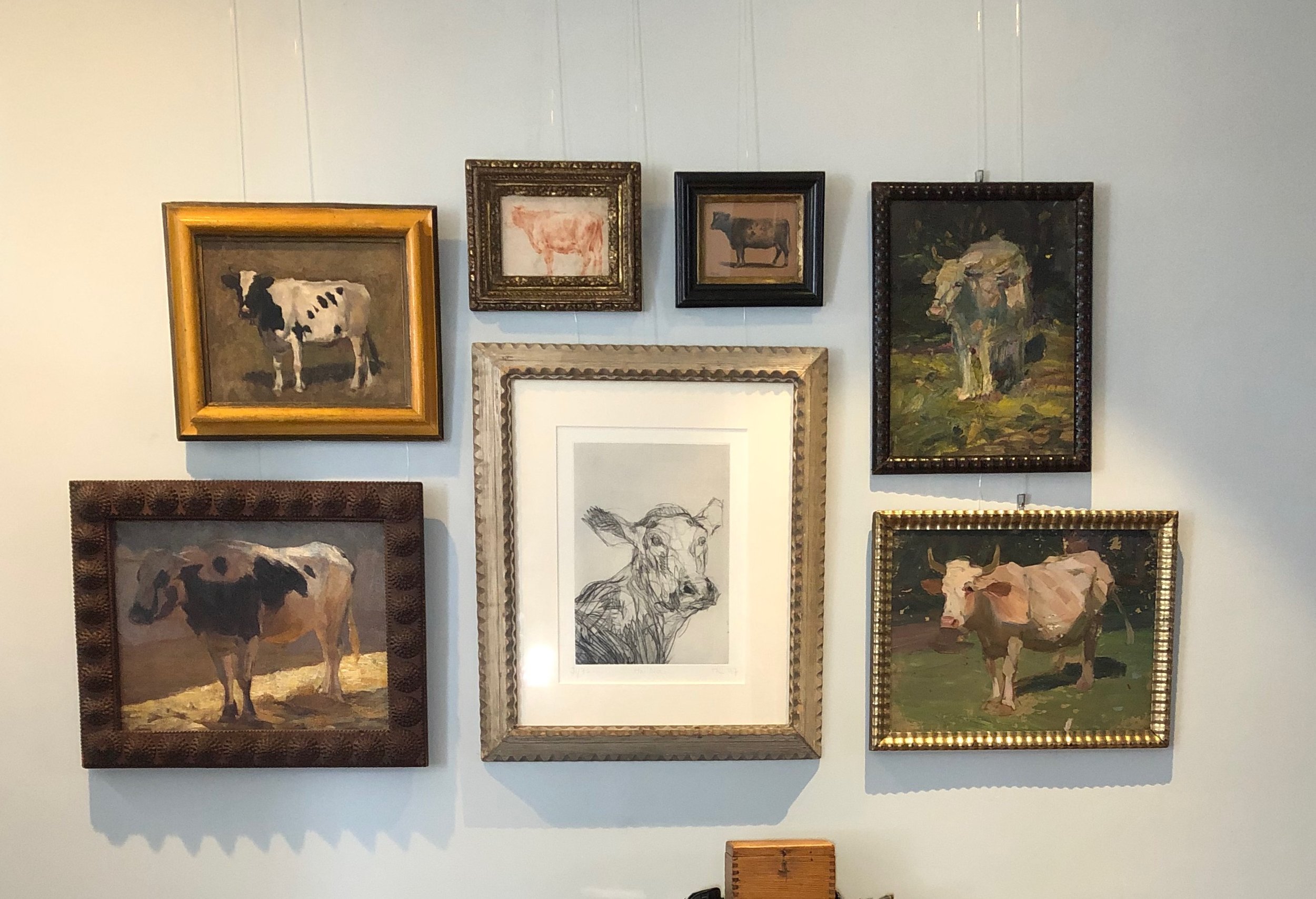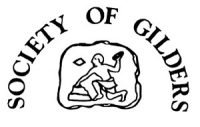Too often the perception is that antique frames are prohibitively expensive. For now, I’ll skip offering up a screed about the money-shredding exercise that is purchasing a mass-produced frame at your local chop shop. I do, however, want to take a look at antique frames in a way that I hope can help. I have never been about putting the most expensive antique you can find around your art. Oh, I’ve done it alright, but I mostly want people to feel that they can put their own stamp on a work of art they like, really make a piece special and reflective of their own taste. And it does not have to be expensive!
I take chances all the time with my pairings, to varying degrees of success. While I love a 17th century gem, I’m equally excited about a 20th century frame that has all the shape, color, and texture I’m looking for (but that might need a little tlc to get back on track).
Here are six points to help people create some memorable pairings on their own.
1. Again, my mantra: Old frames don’t have to be expensive! Some of my favorite pairings were made with unexpected and very inexpensive old frames. The results have been fantastic.
I love this etching (“How Now”) by the fabulous UK artist Nicola Hicks. (Clearly, I love it — I featured it in my last post!) I found this mid-century frame for under $100 and I love everything about it, from its weathered gray finish to the chunky notches around the sight edge and outer perimeter. Those undulations create a sort of running light effect around the piece and beautifully complement the scrambled charm of the subject.
I love that I took a “throwaway” frame and made a pairing that has pride of place in our house.
2. There’s an artistry and luck to pairing frame and art, and it gives that rare opportunity for creativity in an area where we often relegate it to others. Whether you start with the artwork or the frame there’s a kind of potential energy at work; what do you see inside or around the frame? Let your own instincts be your guide.
Even the smallest of frames can be a fun match for a found work of art. The result can be charming.
This sweet 19th c watercolor of a peach is an honored guest in this 19th c. Baroque-styled miniature frame.
I would always advise purchasing unusual shapes. Also, frames with nicely gilded surfaces like half-rounds can easily be used for so many different kinds of art. Buy them when you can!
3. Give yourself some time, but always be ready to create an opportunity. With lots of places to search, online and at markets, throw yourself into the hunt. Know your size needs and learn about a frame’s dimensions. There’s the sight size — the opening “window” edge of the frame, and the rabbet — the dimensions of the back of the frame into which the artwork will fit. Just because it’s not a perfect fit, don’t worry, you still have some options. For a print or a drawing, you can expand it with matting, or add a liner. And depending on the frame, don’t be afraid to cut it down, change the dimensions. Of course, sometimes it’s out of the question (especially with the 18th century and older), but so many 19th century (and later) frames can be improved by re-working, re-sizing them.
I’m mad for this oil sketch of a cow by Boston artist Thomas Allen, Jr (1849-1924). I found this 18th c. Salvator Rosa frame that was in terrible shape but had enough good molding left to cut down to fit this piece (all at a fraction of the cost for a new, similar-style frame).
An inexpensive but gorgeous 19th c tiger maple frame was a perfect complement to this Scott Switzer oil on panel. It slid right in for a perfect fit.
And what better for a drawing of a quotidian Italian appliance than an Italian frame that’s been paint-slathered and distressed? Somehow it makes for an apt pairing.
4. All frames are not gilded and shiny! The can be painted, raw wood, ebonized, partially stripped, the possibilities are nearly endless. Remember that a key job of the frame is to protect the art, but then it becomes a herald to the viewer. Subtly or loudly, a frame announces, “There’s art inside!” and breaks up light no matter its color or texture. It can do its job in myriad finishes.
This 1897 watercolor is right at home ina 20th c folk-carved German frame with decorative bone “buttons.”
5. Make a gallery wall to show off your pairings. My (largely dispersed) collection of cows spanned five centuries of art and frame. Each frame was used to a different effect for each work of art, and there’s a story behind each pairing. A group like this gets visitors talking and can let you see which pairings really stand out.
6. As with anything, find people you can turn to for practical advice. Local framers can do a lot for you, and a gilder/ restorer is a huge help. My go-to frame/carving/gilding/ creative guru is Peter Miller (P.H. Miller Studio) in Berryville, VA. It’s well worth the trip!
Good resources for frame makers and restorers are the Society of Gilders and the American Institute for Conservation. They both have lists of members by state and these people are great resources who can work miracles!












